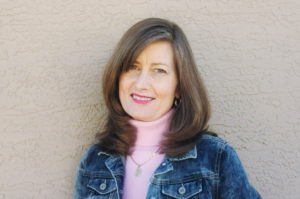The tragedy that took place in Sedona at the hands of self-help guru James Arthur Ray highlights the peril of following New Age prophets and their gospel of prosperity.
Three people died after taking part in a sweat-lodge ceremony at the conclusion of Ray’s $9,695 “Spiritual Warrior” retreat last month near the picturesque town of Sedona.
Of course, the cynics among us are more likely to think of Ray and self-proclaimed motivational speakers like him in terms of “New Age Profits.” Last year, revenue from Arthur’s company hit $9.4 million. All this for teaching people, basically, that positive thoughts attract positive results.

“You really do have the power within you,” his Web site proclaims, “to create the life you desire and deserve.”
And don’t we all desire — indeed, deserve — to be richer, thinner, happier people? Don’t we all want to avoid suffering and be wildly successful?
Not exactly. Not if you’re a follower of Christ anyway.
“Whoever wishes to come after Me must deny himself, take up his cross, and follow Me.” Those are the words of Jesus, recorded in the Gospel according to St. Matthew. And they don’t offer much support to the self-centeredness that characterizes the New Age, self-help movement.
According to these people, you don’t need a savior in Jesus Christ. You can just think of Him as one of many wise teachers. There is no sin, they say, no heaven or hell, no need of redemption.
The truth of the matter is that people everywhere are longing for meaning and fulfillment in their lives, and they’re increasingly looking to people like Ray to help them find it. We are spiritual, no matter how much today’s aggressive atheists insist we are not.
In this era of high unemployment, when people are losing their jobs and homes, it’s no wonder the search for answers seems more desperate than ever.
The most prosperous nation on earth, with the highest standard of living ever achieved, a nation that spends more on cosmetic surgery than the GDP of some developing countries, is full of people who are out of hope. And that’s after we elected a man who promised to restore it.
Catholic ‘secret’ to happiness
Here’s what the Catholic Church teaches: There is hope and its source is found in the triune God, not in worldly success. Hope took on flesh and dwelt among us in the person of Jesus Christ. Those who follow Him are sure to experience the consolation of His love, but they will have a measure of suffering in this life.
It’s a hard message for some and one that makes others uncomfortable. St. Paul put it bluntly: “The message of the cross is foolishness to those who are on the way to ruin, but to us who are being saved, it is the wisdom of God.”
Ray’s contributions to the best-selling book, “The Secret,” in which he and others claim their methods help people attain massive wealth, achieve the impossible and find happiness, have garnered him fawning media attention. Oprah has been one of his biggest promoters.
Consider for a moment a more potent “secret,” one the Catholic Church has always taught, though we don’t hear much of it these days: There is meaning and purpose in suffering, if we are willing to unite it to the Cross of Christ. It’s something St. Thérèse of Lisieux called the “Little Way.”
The pain that we feel at the loss of a loved one, the death of a dream, the betrayal of a friend, even the aches and pains of our bodies, all of it is an opportunity to embrace the cross and love as Jesus loved — humbly and without complaint. There is a deep joy to be found in living this way — a joy the world can never take away.
This is a far cry from the way preached by self-help charlatans who attract many a poorly formed or inactive Catholic. It’s time to fortify our prayer life, grow in the wisdom handed down to us from the Church and recognize the modern-day folly and deceit of the New Age movement. To do otherwise is to risk our own destruction.



